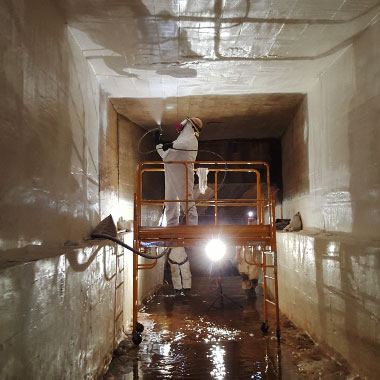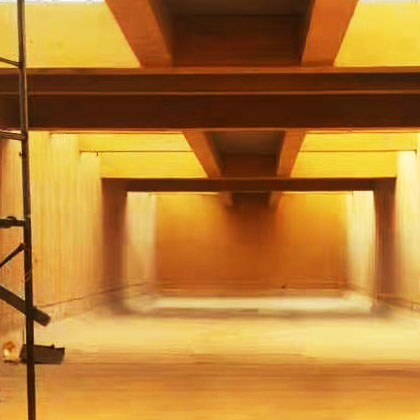Two-component epoxy resin spraying
Two-component epoxy resin spraying
Aiso has developed a two-component epoxy resin for trenchless pipeline repair. The resin contains two components, including material A and material B. Material A is mainly epoxy resin, and material B is mainly a curing agent. The two-component epoxy resin that can be used for pipeline repair, after the AB materials are mixed in proportion, must meet the following performance requirements:
The solid content of the two-component epoxy resin is 100%, which means that the thickness of the two-component epoxy resin does not decrease after curing.
No volatile solvent
The two-component epoxy resin must have a certain viscosity, and there will be no sagging or dripping after spraying or applying
After the epoxy resin is sprayed, a hard anti-corrosion layer is formed on the inner surface of the box culvert, which is resistant to various acids and alkalis. Epoxy resin can be well bonded to concrete and steel surfaces. Experimental results show that the bonding strength between epoxy resin and concrete is higher than the strength between concrete.
During the curing period, the two-component epoxy resin does not react with water molecules, which ensures that the epoxy resin spraying method is conducive to construction in a humid environment.
Cement mortar spraying + two-component epoxy resin spraying repair
If some box culverts have large areas of detachment or damage, you need to first spray or apply cement mortar, and then spray or apply epoxy resin on the surface. The general concrete anti-corrosion performance is limited, and it is necessary to add an epoxy resin anti-corrosion layer on the surface after the cement mortar is cured.
Generally speaking, the concrete interface above the water surface in the box culvert is prone to corrosion and even detachment, and the underwater part is less corroded and damaged. The thickness of the coating for anti-corrosion spraying can be treated differently. The thickness of the coating above the water surface is recommended to be 1.5mm-2.5mm, and the thickness of the coating below the water surface is recommended to be less than 1mm.
After the box culvert is repaired with epoxy resin spraying, the anti-corrosion effect exceeds 50 years.
PE liner + cement mortar repair
As an anti-corrosion layer, PE liner has very good anti-corrosion and wear-resistant functions. The anchor nails behind the PE liner act as a bite to fix the PE board to the cement wall. The specific steps are as follows:
The PE board with anchor nails is prefabricated in the factory
Then it is welded on site according to the size of the box culvert.
Fix the fixed support frame
Put the welded PE board in place and fix the PE board with the support frame
Pour cement mortar into the gap between the PE board and the box culvert wall
Wait for the cement mortar to solidify
Remove the fixed support frame and put it into use

Post time: 2021-03-18 09:17:48
- Previous: Bypass solution for civil engineering
- Next: Dredge Solution













